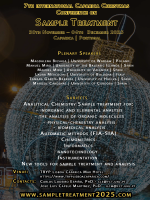Comparison of protein precipitation methods for two-dimensional electrophoresis of dog salivary proteins
DOI: 10.5584/jiomics.v8i1.232
Abstract
Despite saliva being one fluid with growing interest as a source of biomarkers, both in humans and animal models, few studies have been reported that use proteomic approaches for canine saliva analyses. Two-dimensional electrophoresis (2-DE) is considerably used in biomarkers research and their use for dog saliva study may had relevant knowledge about pathology/physiology. The quality of the results obtained using 2-DE greatly depends on sample preparation. Different protein precipitation methods are frequently used for removing interfering compounds and concentrating samples, but their efficiency varies according to sample characteristics. For dog saliva samples no information was found about the best precipitant and precipitation method for electrophoretic protein profiling.
In this study, six different protein precipitation methods were compared. Precipitation of dog salivary proteins with trichloroacetic acid 20% (w/v) resulted in lower protein recovery rate than other methods tested, but allowed protein profiles highly correlated with the ones from original samples. Moreover, this protocol resulted in good protein separation in 2-DE, with the visualization of spots from salivary proteins not observed when samples were treated using other methods. Based on this, we propose the use of TCA for dog saliva whenever precipitation is needed for protein profile analysis.









